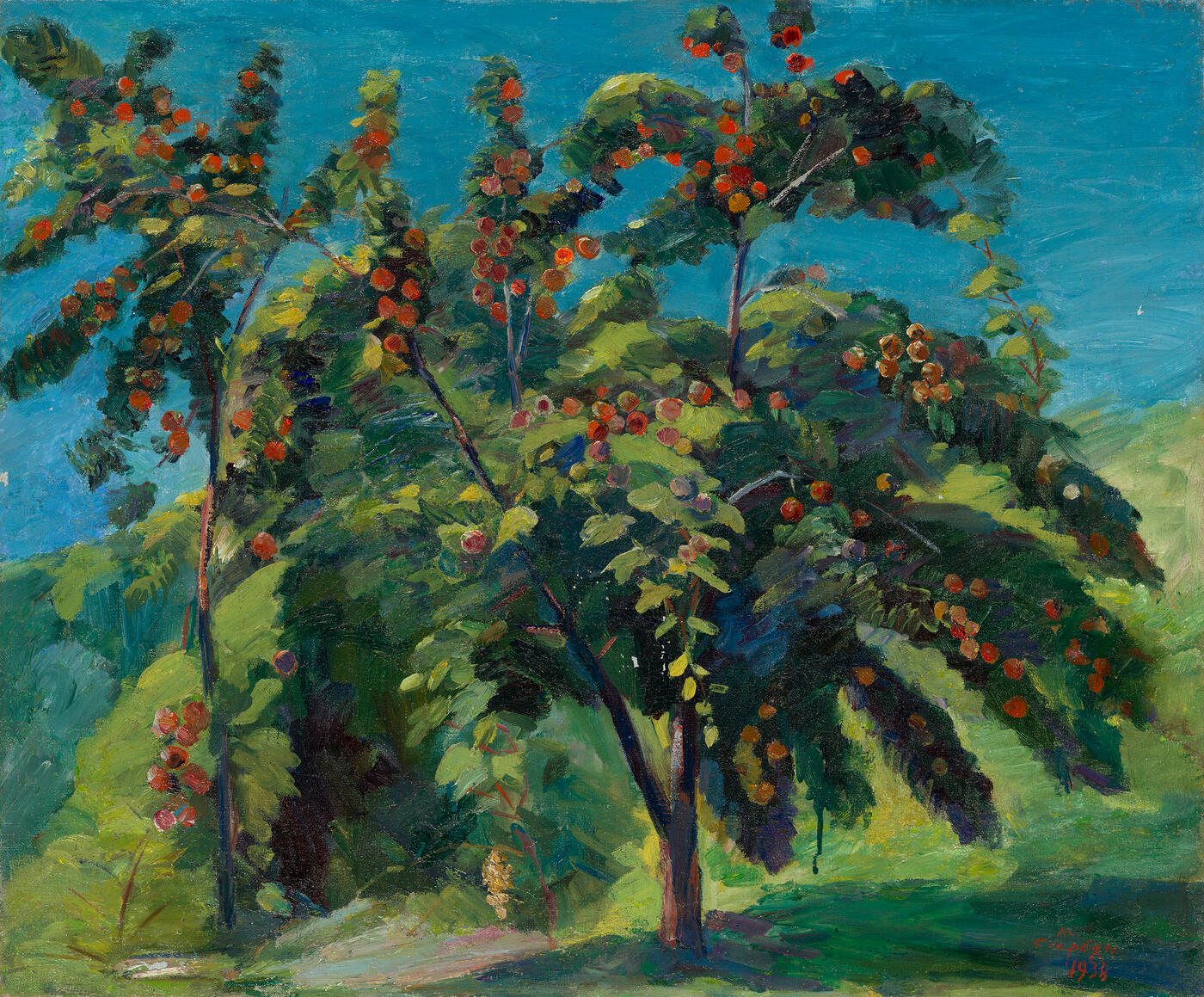28 Nov 2018 Important Russian Art Auctions, at Asia House
28 November 2018

15. SARYAN, MARTIROS (1880–1972)
In the Peach Garden, signed and dated 1938, also further signed, titled in Cyrillic, numbered "418" and dated on the reverse.
Oil on canvas, 54.5 by 65.5 cm.
150,000-200,000 GBP
Provenance: A gift from the artist to Yuri Gaziev, Deputy Director of the Vakhtangov State Academic Theatre, in 1962.
Russian Pictures, Christie’s London, 26 November 2008, lot 390. Acquired at the above sale by the present owner.
Private collection, UK.
Authenticity of the work has been confirmed by the expert Yu. Rybakova.
The presented for auction work In the Peach Garden was created by Martiros Saryan in 1938 as a continuation of a lengthy cycle, spanning many years and devoted to pictures of the flowering and fruit-bearing trees and gardens that the artist loved to paint.
This remarkable, fresh composition is most likely to have been executed by Saryan while he was making preparations for his large, official canvas Gathering Peaches on a Collective Farm in Armenia (1938, State Central Museum of Contemporary History of Russia, Moscow). However, once he had travelled to the collective farm to paint an exemplary genre scene about gathering in the harvest and to demonstrate thereby his personal involvement in modern life and participation in the development of socialist agriculture in his homeland, the artist was immediately carried away by his favourite motif and banished the entire ideological and genre element from the secluded corner of the garden that he had found.
We have before us yet another inspired “portrait” of a tree of the kind that Saryan began to paint in the 1910s, creating a whole sequence of flowering lilacs, and pomegranate and apricot trees covered with fruit. Upon his return from Paris, his manner and approach to nature underwent a significant change, but his actual passion for conveying the vitality and fertility of the Armenian countryside and his choice of “arboreal nature” remained intact. One has only to compare the rather tendentious and frosty finished picture of the collective farm’s peach harvesting, as presented at Saryan’s review exhibition and then replicated in his postcards and albums, with the artist’s études of the same garden, which are alive and full of heartfelt admiration and genuine pictorial artistry.
The presented bright, sunlit landscape is striking, with the blueness of the sky wrapped around the green foliage of the trees — foliage that in turn takes in many shades of colour. As a disciple of Korovin, Saryan largely follows the precepts of that remarkable painter when depicting nature in full bloom. His landscape breathes with air, and he deals skilfully with the task of matching the colours so as to form a unified harmony, despite the vividness of the palette. Just then, in the 1930s, the eminent critic Abram Efros had good reason to write that, from the artistic point of view, Saryan amounted to “a rare kind of southerner who is constrained by northern reserve... Inside his professional colour range, in the selection of paints applied to the canvas, he remains a natural man of the South, a born user of things that are bright; but he seeks and finds in them a depth in which the tiresomely fleeting glint of rays over the surface of objects loses its incoherence and so unites, consolidates, tones in and gains a figurative harmony. Saryan’s paintings are bright, but not variegated, they are multi-hued, but not multi-coloured; their exuberant polyphony is directed inwards rather than outwards; the spots shimmer rather than burn; they are soft and flexible rather than stiff and are not stretched out. One feels like returning to them. To the eye they are restful, not painful and not wearisome. Saryan’s painting is heat in the shade” (A. Efros, “Martiros Saryan”, Mastera raznykh epokh, Moscow, 1979, p. 266).
Notes on symbols:
* Indicates 5% Import Duty Charge applies.
Ω Indicates 20% Import Duty Charge applies.
§ Indicates Artist's Resale Right applies.
† Indicates Standard VAT scheme applies, and the rate of 20% VAT will be charged on both hammer price and premium.